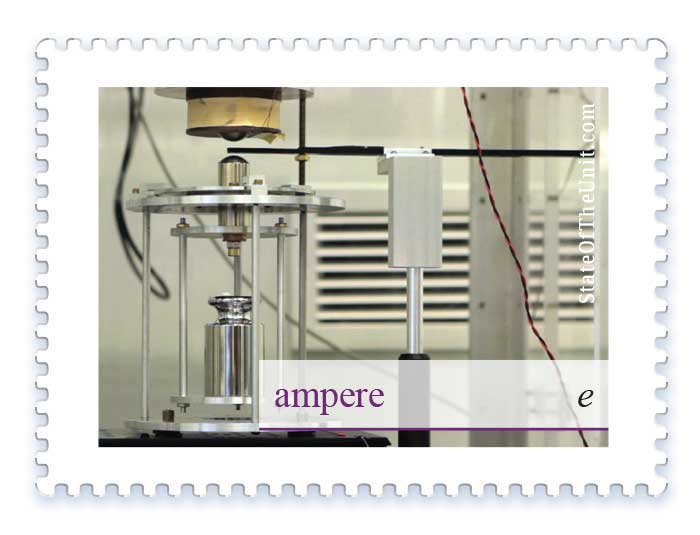SI Unit: Ampere
•

Patrick Abbott's levitation experiment uses the ampere unit
Keeping standard kilograms in vacuum reduces some interfering effects from dust and air currents. To compare masses kept in vacuum with masses in normal atmosphere, Patrick Abbott and his colleagues at NIST use magnetic levitation. A stainless steel kilogram (whose precise mass is unknown) rests on carriage topped with a magnet. That magnet is attracted to another magnet above it in a vacuum chamber holding a reference mass. Whether or not the carriage levitates (or put another way, resists gravity) is controlled by the amount of electrical current generating a magnetic field. Too strong and the mass in air will be attracted to the mass above it. Too weak a magnetic field and gravity will pull the carriage down. When the magnetic field is just right, the carriage levitates, with small gaps below and above the carriage. Magic!
What you see here is a table-top device that shows magnetic levitation will be a viable method to compare masses in vacuum and air. There are two things you don't see in this photo. One is the toy magnetic-levitating globe which works on the same concept.The other is the all-aluminum, full-sized machine which was in development when I visited the lab. That machine, about three meters tall, will be used to disseminate the kilogram after the redefinition.